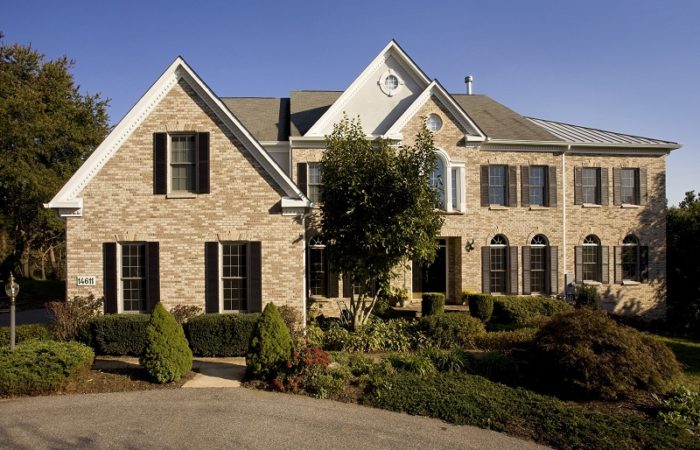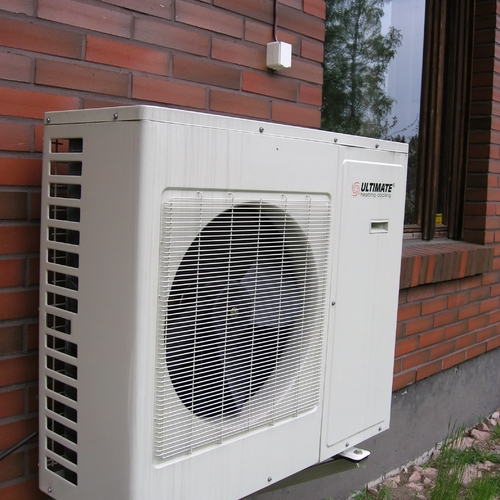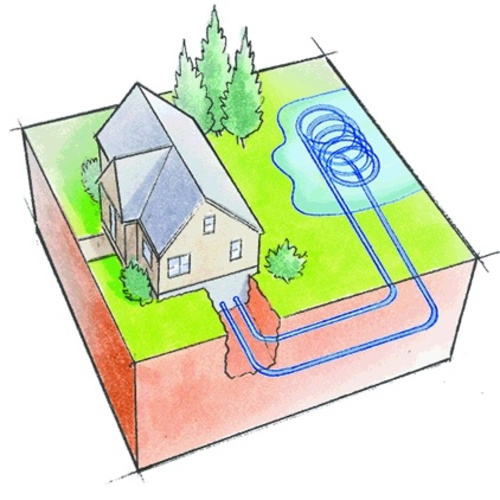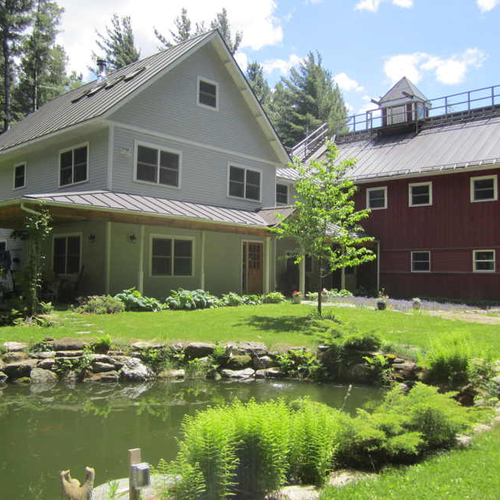Looking through the April issue of Remodeling magazine (after reading my own column in the issue), I ran across an article about John Tabor, a remodeler who used an addition to his own home to learn about green building and train his crews on technologies that they had not yet used.
He included several things in his project that I would classify as “bling,” such as a PV array and a ground-source heat pump, and much of the focus of the article was on the (high) installation costs of these systems.
He used insulated concrete forms for the foundation on his addition, probably a good choice, and fiberglass insulation with a flash coat of closed cell foam in the walls. To me, the article was a bit short on substance and focused on the products over the process, doing a mild disservice to green remodeling in the process.
Where’s the performance info?
I know the team at Remodeling magazine and respect them as journalists, but I think they missed an opportunity by focusing on the expensive stuff instead of the boring, hidden, low-cost things that make a project green. In any green remodeling project, I want to know how the house performed before and after the work, and although they did say that the bills for HVAC are about 1/3 lower, I would like to get some more details.
What were the envelope and duct leakage amounts before and after the work? How about energy use per square foot (with an adjustment for degree days) before and after the work? This is not that hard to put together and gives readers a more objective view of the project.
How much insulation?
One interesting comment came near the end of the article where it was pointed out that they blew four feet of fiberglass insulation in the attic. Four feet? Depending on the density, that’s between R-100 and R-200 — way more than necessary in climate zone 4. Who suggested they use that much insulation?
I wonder if an energy consultant was involved in the project to provide advice to the project team? If they were, it would have been nice to see their reports.
Coverage of the ground-source heat pump installation took up about one quarter of the article, pointing out the cost of the wells ($30,000) and the total system cost ($88,000) before tax credits and other rebates. An objective ROI calculation would be a good way to assess the value of this particular system.
Interestingly, the owner pointed out that the house doesn’t feel as dry with the new HVAC system, thinking that his old gas furnace was the problem. Very likely the house is so much better air sealed than before that there is much less air transported vapor going out of the house in winter. That is what is keeping the house from drying out, not his new, pricey heat pump.
We’ve come too far
The main point of the article is good — a remodeler who wanted to experiment with green practices took on his own project to learn before he subjected his clients to it. That’s an excellent idea — something I’ve done myself in the past.
But this article, in the Home Performance section of the magazine, would have served readers better with more analysis of the project. We want to know the thought processes that went into different decisions. We want to know what worked out well and what didn’t go as well as planned. What did Tabor learn that he wouldn’t do again?
People are scared of getting into green remodeling, and featuring $88,000 HVAC systems and foundations that cost twice as much won’t assuage any of that fear. There are plenty of ways to create high-performance remodeling projects without the expensive toys — and that is what we need to focus on.
Weekly Newsletter
Get building science and energy efficiency advice, plus special offers, in your inbox.
















22 Comments
Indeed!
The retrofit/reno market is and always will be a much larger market than new construction despite most of the discussion revolving around new construction. We need to find and develop affordable and practical ways for people to improve existing buildings. An $88k system will never pay for itself let alone provide economic value to a homeowner.
I suspect
the editors of Remodeling Magazine are more interested in glitz and bling on the theory that it will sell more magazines than will the "boring stuff" which is, as always, also the more important devil that's in the details.
Not sure how to refocus the culture on quality rather than raw consumerism.
"Not sure how to refocus the culture on quality rather than raw
You sure hit the nail on the head with that one. I would't look to an advertiser-oriented mass-market magazine to spearhead the effort.
Good Sermon but.....
GBA should practice what it preaches, when it comes to presenting performance data. Unfortunately, GBA has a very long history of articles/blogs about "high performance" houses that present very superficial performance data that could be used to help develop designs. Maybe I'm wrong and just missed it. For example, is there an example of a GBA article or blog that gives specific data such as heating demand btu/ square foot/ HDD for a high performance house and breaks up that heating demand between passive solar contribution and heating system contribution? Instead of data like that, I remember seeing a lot of data something like "we only used a cord of firewood last year."
Response to Sonny Chatum
Sonny,
You make a good point. I agree that GBA could be doing a better job of providing performance data for the homes we report on.
The main reason that such data are often lacking is not any bias by GBA, or any greenwashing conspiracy; rather, it is due to our limited editorial resources.
It takes a journalist many hours to track down such data when they are available; and frankly, many interesting homes lack such performance data, either because the home is new or because no one cares enough to do any performance monitoring.
Here at GBA, we depend in many ways on the contributions of our readers. I invite any GBA readers with good performance data on homes they have built or designed to submit them to me. (My e-mail address is martin [at] greenbuildingadvisor [dot] com.)
Finally, it seems you are interested in "heating demand btu/ square foot/ HDD" and in reporting that "breaks up that heating demand between passive solar contribution and heating system contribution." As I'm sure you know, other readers may want to see performance data reported in other ways; and just because we don't always choose your favorite metric, doesn't mean that we aren't striving to report all the performance data we can, as accurately as humanly possible.
Thanks for your feedback.
Green Home and GSHP
I don't think they got competitive bids on the Ground Source Heat Pump. I routinely get prices for 5 ton units at $20K including the wells. I've had a couple of closed loop that come in about $30K.
Carl, I would agree the hidden items are those that made the home more comfortable, not the glitz. I also wonder if the 4 feet of FG in the attic was some type of typo for R-40 which would be the IECC 2009 recommended amount for CZ 4.
About John Tabor's $88,000 HVAC system
I'm glad that Remodeling magazine and Carl Seville have highlighted the high cost of John Tabor's GSHP system. It's true that some builders have been able to install a GSHP for only $18,000, but I have also heard many stories of $30,000 systems and $40,000 systems. Tabor's $88,000 system certainly takes the cake.
The main problem with GSHP advocates (and some academic researchers) is that they almost always talk about the $18,000 systems, and pretend that the $30,000 systems don't really exist.
"They almost always talk about the $18,000 systems...
...and pretend that you can't get a more cost effective solution for the $30K that the system really costs by getting serious about upgrading the building envelope, using ductless air-source, and buying enough photovoltaics to cover any difference in operating efficiency, if there even is one. In Tabor's Rockville MD climate inverter drive ductless air source can meet or even beat GSHP efficiency, at much lower design risk or up front cost. It's hard to retrofit a huge house with ductless without some aesthetic compromise, but for an upfront cost difference in excess of $70K many people would be able to adjust...
Tabor's 3 story addition probably has more square feet of conditioned space than my house, and if he was retrofitting the entire house for geo it may take 3 times the geo to cover the load, at 3x the installed price. $88K for GSHP may not be out of line it's 10 ton system. There were THREE 450 foot wells, after all. Soil and groundwater conditions will differ, but that's good for 8 tons or more in my neighborhood. YMMV. The cost most likely reflects the sheer size of the house.
Remodeling's article on John Tabor project
I’m not sure how many of the posters above have read the Remodeling article, which at the time they posted was only available in print. Certainly some assumptions are being made based on what appears to be a bias against a business-oriented magazine that is distributed free to professionals. So I won’t waste time addressing those comments.
I will, however, acknowledge that Carl makes some good points; he usually does. And certainly time and resources are always a consideration, as Martin points out in his response to Sonny. But this article was never intended as a case study of a deep energy retrofit. Perhaps we set the wrong expectations by using the term “practices” in the deck instead of “technologies” or “products.” John Tabor is still collecting performance data, but not every story about energy retrofits is about the data. We are a business magazine and this wasn’t your typical remodeling project. It was a training ground with a marketing component, and that’s the story we chose to write. We included costs partly because there is a lot of speculation about the cost of renewables but not many hard numbers. But mostly the costs help to establish the importance Tabor placed on gaining this first-hand experience and building a showcase he could use with future customers.
It’s good to see that people are paying such close attention, and I appreciate those posts engaged in serious debate about the project in question. It’s a reminder to me that there are different expectations among our audiences.
Thanks for your comments, Sal
For GBA readers who don't know Sal Alfano, he's the editor of Remodeling. He's also a former editor of The Journal of Light Construction, where he was my boss in the late 1990s.
Hi, Sal! Thanks for posting.
My Addition
Carl,
To set the record straight, the cost of replacing our hvac system with geothermal, including well drilling and a lot of duct work was $58,000 not $88,000. $88,000 is a mistake. When I said the air was dry, I was referring to the hot, dry air that comes out of the registers when the furnace was on. With the geothermal system the air coming out of the registers is at a lower, more comfortable temperature than a gas furnace.
As the article states, our attics have 4 feet of loose fill blown-in fiberglass in many areas to include the hvac ducts in the insulation envelop. I agree that 4 foot is more than you need to minimize heat transfer through the ceiling.
In reading your blog, I get the impression that you think it is wrong to install geothermal or solar because they are expensive?
Our investment in the geothermal system was not just for our own comfort. I actively promote the use of these systems in our remodels, and I think it is a good thing to cut down on our use of oil and natural gas.I believe that this is the way most people will heat and cool, and power their houses in the future, and that costs will come down as more people adopt this technology.
John Tabor
Thanks, John
I appreciate your chiming in here. My post intended to point out my frustration with the article, and others like it that focus on the stuff that people tend to migrate to because it is visible, like geothermal, and solar, as well as other "green" products like bamboo, recycled glass counters, and the like. People like "stuff" and in my opinion, this stuff is much less important than the process that goes into a green building. Unfortunately, the process is not particularly interesting, nor does it photograph well. So, writers tend to fall back on talking about and showing pictures of the stuff, which is usually expensive. I am not necessarily anti geothermal or solar, as long as they are done in the context of a well conceived project- one where the building is a reasonable size, window orientation is taken into consideration, and the project has been designed and built considering solid building science principles and, in fact, executed well. What I do object to is expensive stuff like geothermal and solar stuck on otherwise poorly designed and built homes. The Remodeling article didn't provide enough information to make a judgement on this in your case, and that is one of my main problems with it. I realize that it was not intended to be a comprehensive analysis of your project, but as I said in the post, by focusing on the expensive stuff rather than a deeper project overview, I think it did a disservice to the industry and, in fact, may serve to scare off some people who might be considering green remodeling because of the big ticket items that were featured in the article.
I'm glad you are learning about high performance and green remodeling and using your own house to learn, something i have done myself. Good luck with upcoming project and I hope your house leads you to some good work.
$18,000 $46,000 or $88,000 GSHPs or now $58,000
John Nicholas, where and who provides you with your systems at <$20,000? Or email Ajbuilderny a t g mail
We have some new GEO companies of late, will have to get their numbers, may be better here now. Last I checked, $45,000 or much more here in my area.
Edit; April 26th. So far no names of contractors that install $18,000 systems. Please share as you would be doing a huge public service. I have never seen a contract at that price and would love to especially if servicing my area.
John Tabor now has updated us as to the price for his system, $58,000. Closer to what my costs here have been quoted at. No where near $18,000 as some quote. Still waiting for names.
My Addition
Thank you for your response to me, Carl.
These badly designed and poorly built homes you describe are what my clients and I own. We are trying to figure out how to improve what we have to work with, and discover what the true costs of these improvements are.
Remodeling is a magazine that is mainly geared towards remodeling company owners and their associates. If remodeling contractors are going promote and practice green remodeling, we need to be able to approach this with eyes wide open and have a clear understanding of what it really costs to make these improvements. I believe the intent of the article was to share this information with other remodelers.
Cost Effective
The biggest issue I have with this original story, this home, and many other examples of green building similar is that this is a prime example of green improvements that are not cost effective. As contractors and home performance experts we should focus on quality and craftsmanship and a whole house systems approach towards green and energy efficiency and less on expensive silver bullet technologies like ground source heat pumps. I know ROI is not the only reason we incorporate green technologies but green building will never catch on with the masses unless it is affordable and pencils out with good ROI.
ROI is not the issue
Different strokes for different folks. We do a lot of remodeling - most of our clients scrutinize every dollar in the discretionary expenditure column but there have been some who have been happy to drop upwards of $80K on a single bathroom renovation: ROI = never. Even when they or their descendants come to sell the house, market variability will count way more in the valuation than fancy hardware and a high-end tile job. I will never recommend GSHP or other green 'bling' to clients for whom every dollar counts, but I wouldn't argue with one who has the resources to install BOTH the sexy tech AND the hidden, boring stuff that Carl rightfully likes to insist upon.
When it comes to public policy though it's a different matter. I have a problem with a homeowner getting tens of thousands of dollars in tax credits for a personal expenditure that's of marginal effective environmental value. In effect I'm paying part of the cost of high-end HVAC equipment for a homeowner who's typically far wealthier than I. When it comes to other ill-advised public subsidies like the those to oil and gas and agribusiness companies this is just in the noise, but it's still not OK.
Cost Effective
I agree, it's not just ROI, consumer behavior is based on perception of value. I do a lot remodeling work with no ROI unless the house should be sold. As an industry we need to focus on affordable energy upgrades and getting back to craftsmanship and quality building. We don't need advanced technology to build green but just do what we have been doing better. Green should not be perceived by the consumer to cost more. It would be interesting to see how many consumers would purchase a $50k ground source heating system vs. a $13k well designed and quality installed central furnace that provides the same level of comfort.
http://www.hardingconstruction.biz
I largely agree with you Wes
But let's not pretend that green doesn't cost more. Sure, given the environmental and ethical cost of the mainstream alternative, pasture-raised beef and organic produce SHOULD be the only option out there. But while it's not, those sustainably-sourced items will always show a premium price. Same goes for the essentials of green building: certified lumber, formaldehyde-free casework, quality workmanship, etc. etc..... you know the commodity market will always be there, offering inferior but cheaper alternatives.
Happy days are here today for
Happy days are here today for me. On another blog Dick Russell has posted about his home and I am sold on all of it, finally. I will work toward having a similar home available for my future customers. Thanks go to Dick for designing and building and sharing what I feel is a great product, a fine GEO home.
Green doesn't have to cost more
James
I have to take issue with your comment about green costing more. Basic green building is a combination of following energy codes, building codes, manufacturers instructions and quality work. The reason that this sometimes commands a premium is that as a society we are willing to accept substandard, and frequently illegal and incompetent work as the norm. As an industry we need to create the demand for quality and competence as the baseline. This also applies to using materials that aren't detrimental yo the environment and our health. Unfortunately we are addicted to big and cheap and tend to not want to pay what things are worth. Hopefully we will see continued movement towards quality and value over quantity in our buildings.
I don't think we disagree, Carl...
Me
Carl
Aren't we saying the same thing? The point is that as a society we DO accept that as the norm. Expecting the commodity market to do any better any time soon is wishful thinking, and as a result 'green' building is almost invariably more expensive than the normal standard of construction. To take just one example, an insulation job that meets a decent standard is going to cost at least 20% more than the common slapdash work that constitutes the minimum that will pass inspection, and probably more. Better to be upfront about this and not pretend otherwise to the clients who depend on us for honest advice.
James and Carl, as I have
James and Carl, as I have said before, I have never seen a horrible insulation job. In fact they all have been top shelf. The busy McMansion South with prices that are a third of our area must have a lot to do with your areas having these issues. That blame goes to the large tract building companies of your area maybe, and the price they are competing among themselves to hit? Probably. We just don't build anywhere near that quantity of homes here though we do have a big townhouse and apartment push going of late. That is our version of cheap digs. Awful. Just awful. I should post some pics. Near Saratoga NY they are throwing up groups of a hundred residences all with the same plan and even colors. Tie on a few too many and you may never get your key to fit a door.
Log in or create an account to post a comment.
Sign up Log in